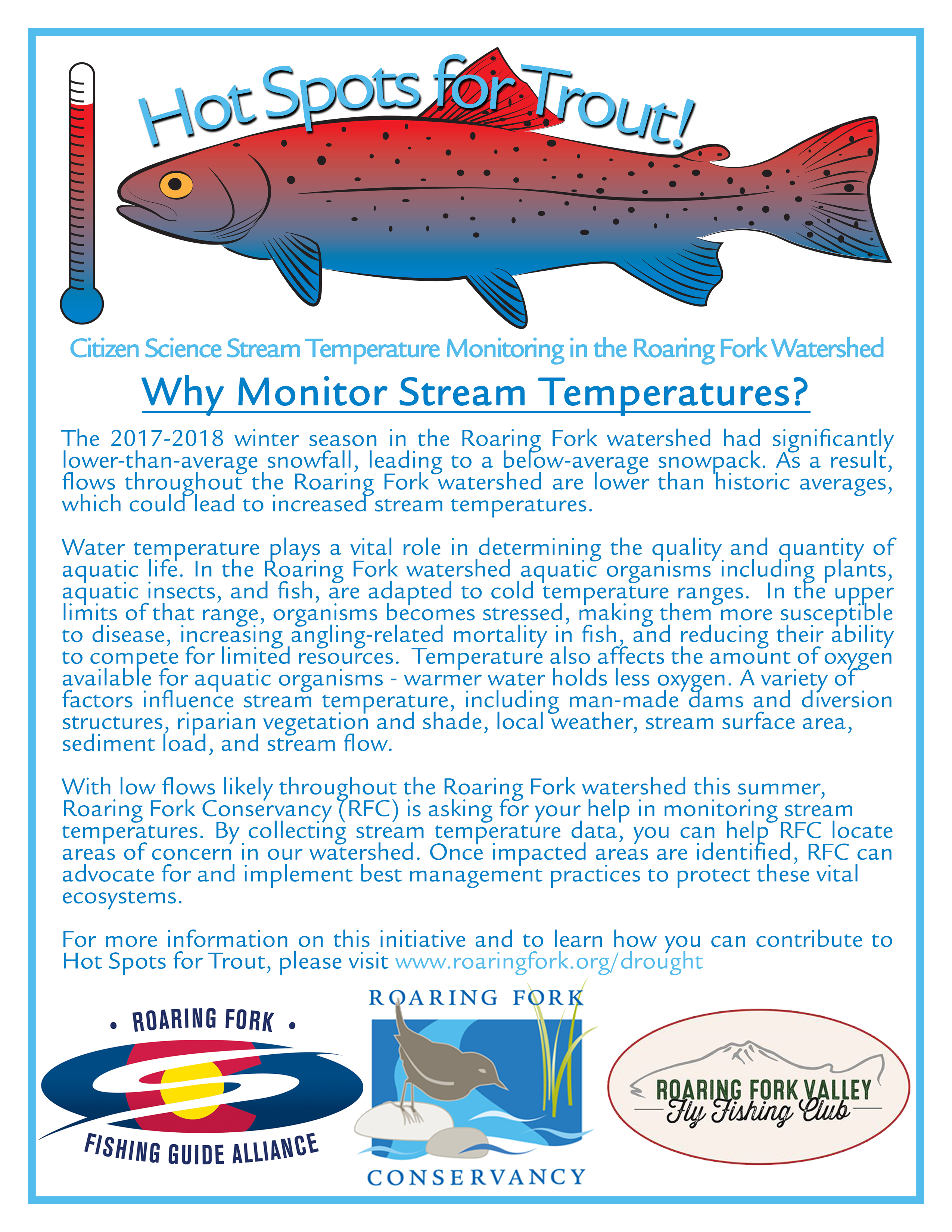The 2017-2018 winter season in the Roaring Fork watershed had significantly lower-than-average snowfall, leading to a below-average snowpack. As a result, flows throughout the Roaring Fork watershed are lower than historic averages, which could lead to increased stream temperatures.
Water temperature plays a vital role in determining the quality and quantity of aquatic life. In the Roaring Fork watershed aquatic organisms including plants, aquatic insects, and fish, are adapted to cold temperature ranges. In the upper limits of that range, organisms becomes stressed, making them more susceptible to disease, increasing angling-related mortality in fish, and reducing their ability to compete for limited resources. Temperature also affects the amount of oxygen available for aquatic organisms - warmer water holds less oxygen. A variety of factors influence stream temperature, including man-made dams and diversion structures, riparian vegetation and shade, local weather, stream surface area, sediment load, and stream flow.
With low flows likely throughout the Roaring Fork watershed this summer, Roaring Fork Conservancy (RFC) is asking for your help in monitoring stream temperatures. By collecting stream temperature data, you can help RFC locate areas of concern in our watershed. Once impacted areas are identified, RFC can advocate for and implement best management practices to protect these vital ecosystems.
For more information on this initiative and to learn how you can contribute to Hot Spots for Trout, please visit www.roaringfork.org/drought.
